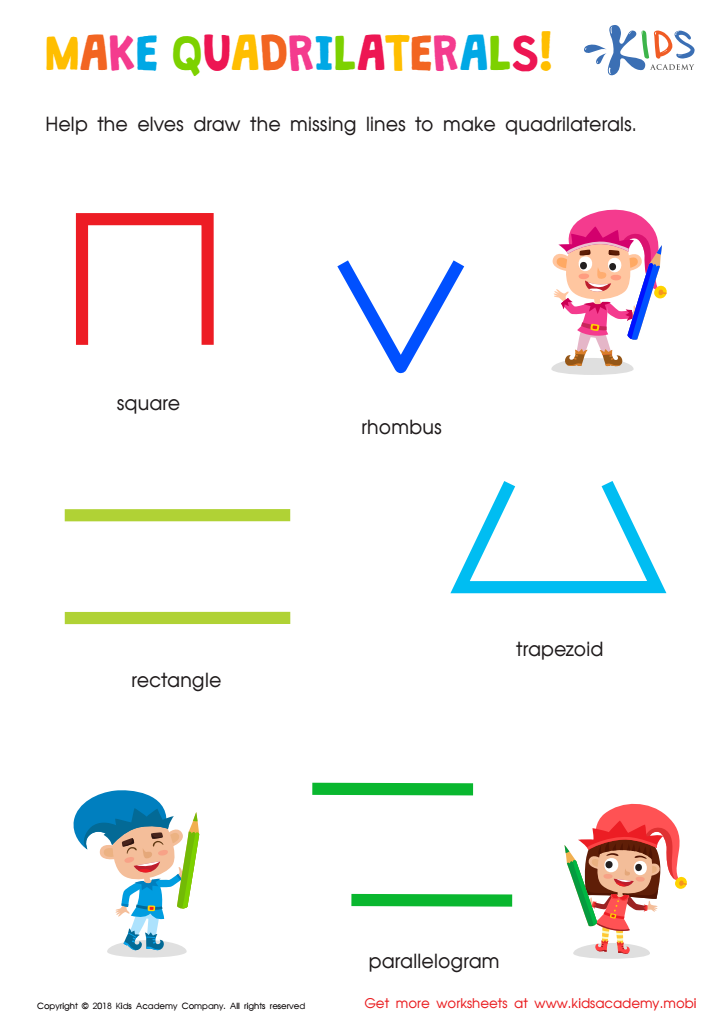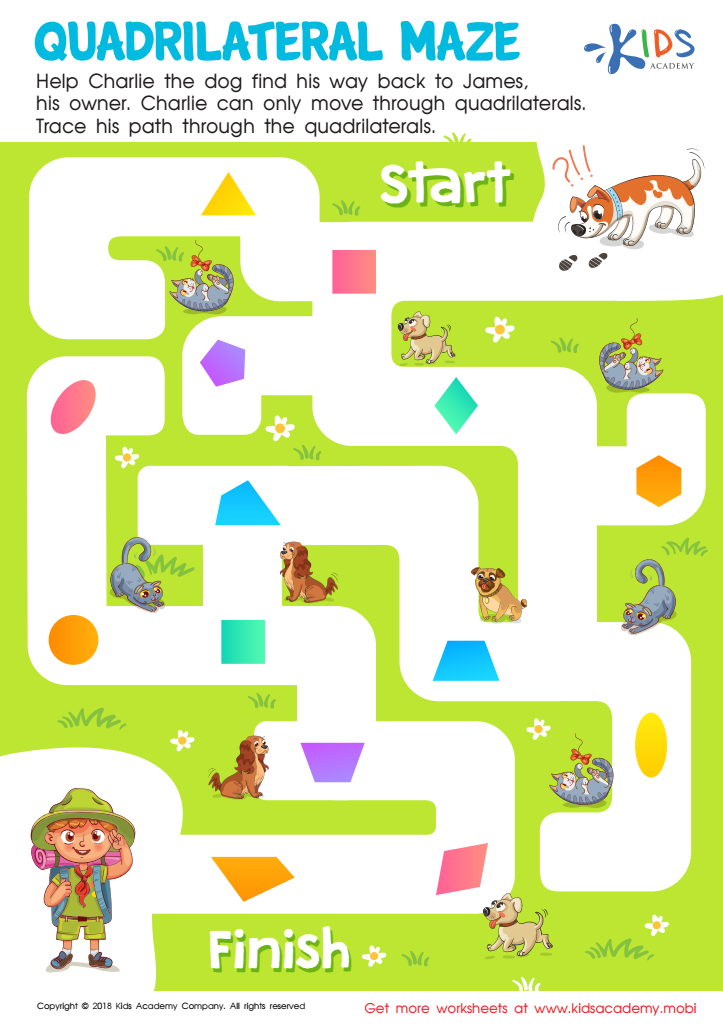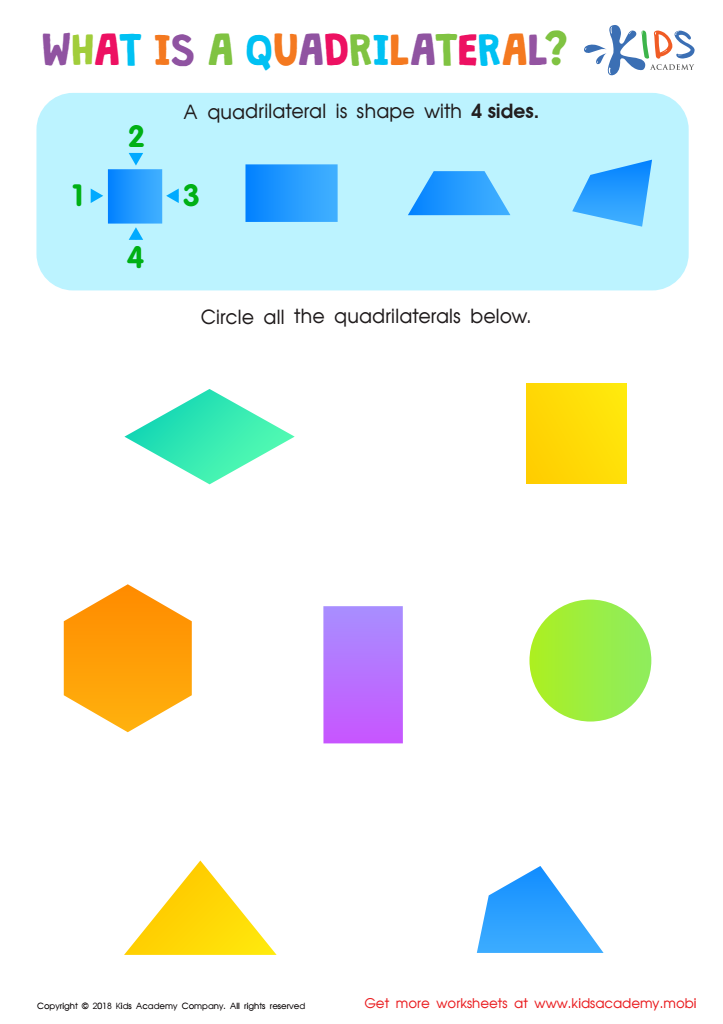Understanding quadrilaterals Geometry Worksheets for Ages 7-8
4 filtered results
-
From - To
Explore our engaging "Understanding Quadrilaterals Geometry Worksheets" designed specifically for children aged 7-8. These interactive worksheets aim to introduce young learners to the fascinating world of quadrilaterals, helping them identify and differentiate between squares, rectangles, trapezoids, and more. Through fun exercises and colorful visuals, students will develop essential geometry skills while enhancing their shape recognition and classification abilities. Ideal for classroom use or at-home learning, these worksheets promote critical thinking and creativity. Join your child on an educational journey to master quadrilaterals and build a strong foundation for future math success. Start exploring today!


Make Quadrilaterals Worksheet


Identify Quadrilaterals Worksheet


Quadrilateral Maze Worksheet


What Is a Quadrilateral? Worksheet
Understanding quadrilaterals is crucial for children aged 7-8 as it lays the foundation for their spatial reasoning and geometric skills. At this developmental stage, children begin to explore shapes and their properties, fostering critical thinking and problem-solving abilities essential for future math learning. Quadrilaterals, as four-sided polygons, introduce concepts such as angles, parallel lines, and symmetry, which are integral to a myriad of real-world applications.
By engaging with quadrilaterals, children can also enhance their observational skills; they learn to identify shapes in their environment and understand spatial relationships, which are vital for fields like art, architecture, and engineering. Furthermore, grasping these geometric concepts promotes cognitive development, improving children's ability to make connections between different ideas.
For parents and teachers, fostering an understanding of quadrilaterals not only aids in mathematics proficiency but also develops children’s confidence and interest in learning. Incorporating hands-on activities and visual aids can make learning enjoyable, reinforcing the concepts while making them relatable and impactful. Ultimately, nurturing geometric awareness at an early age sets students on a path toward academic success and prepares them for more complex mathematical topics in the future.
 Assign to My Students
Assign to My Students




















